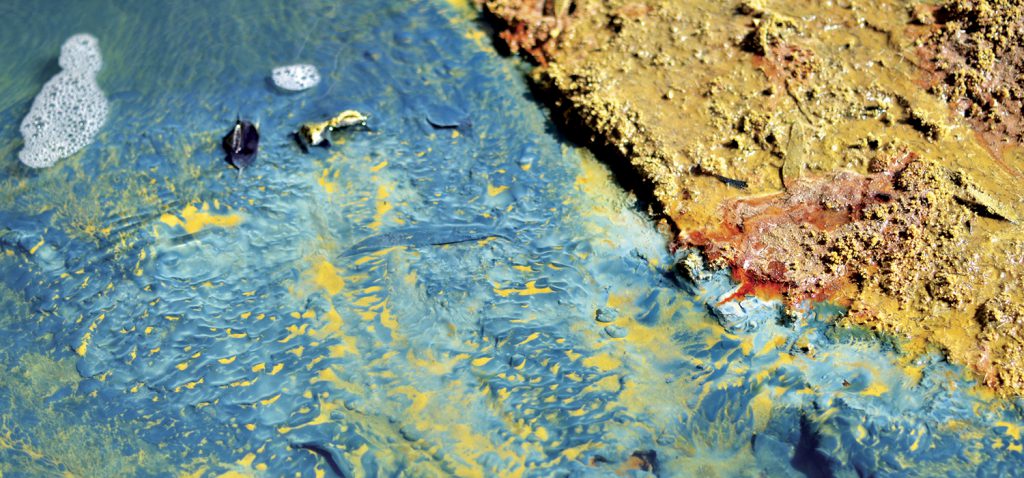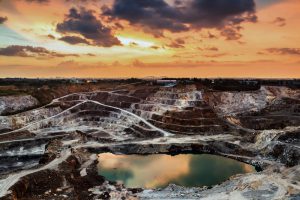SA Mining
Environmental Compliance
We do not face a choice between protecting our environment or protecting our economy. We face a choice between protecting our economy by protecting our environment – or allowing environmental havoc to create economic havoc.” – Robert Rubin (American lawyer and former cabinet member)
One would think that a country whose history is steeped in mining would have its environmental challenges in hand. South Africa’s mining history spans well over 100 years, with the first diamonds and gold discovered in the late 1800s.
However, government’s laggard stance to environmental concerns continues to be a battle between environmental and key industry players.
SA Mining recently caught up with the Federation for a Sustainable Environment (FSE) to understand how well the concerns plaguing industry are being addressed.
“Increasingly we are seeing demands from NGOs and mining-affected communities for greater environmental and social responsibility and accountability in the mining industry. Progressive mining companies acknowledge that if they are going to be successful and sustainable, they have to work closely with local communities and demonstrate that the world is a better place across all three sustainability measures – social, environmental and economic performance,” says environmental activist and FSE’s CEO Mariette Liefferink.
So how is South Africa doing at meeting its environmental obligations?
While there are a number of policies in place to address various environmental issues, Liefferink notes that these policies exist in vain if not implemented.
Despite good intentions and policies, industry is still falling short on meeting environmental legislation requirements.
Liefferink highlights the words of Judge Spilg in the Uzani Environmental Advocacy v BP Southern Africa judgment:
“NEMA [the National Environmental Management Act, 107 of 1998] not only requires a transparent administration but recognised the contribution that can be made to the protection of the environment by a vigilant and committed public which has most to lose … Securing protection is therefore no longer the exclusive preserve of those engaged in these activities, nor of an opaque administration or an under capacitated and potentially inhibited law enforcement agency which cannot claim the number of successful convictions one would have expected despite clear evidence of historic degradation to our environment.”
Liefferink says apart from identifying that some mining companies still operated without adequate financial provision for repairing damage caused to the environment by mining activities, the Portfolio Committee on Mineral Resources indicated that changes to the mining law, made by Parliament after 2002 to ensure that the polluter pays, had also not proven effective.
Furthermore, the South African Human Rights Commission (SAHRC) has indicated that existing sanctions for non-compliance with environmental laws and regulations are inadequate and do not address, or dis-incentivise, systemic non-compliance in the sector.
“Aside from there being a lack of mechanisms to monitor compliance and ensure enforcement, there is also a lack of clarity on the rules when it comes to business rescue practitioners. It seems that there is non-application of the law resulting in a free for all,” she says.
The way forward
According to Liefferink, the most effective way forward would be for the SAHRC’s recommendations to be heeded, especially those redirecting the Department of Mineral Resources (DMR) and Department of Environmental Affairs (DEA) to issue public notices to existing mining licence applications that operate in sensitive and protected areas, “including seabed mining”.
Apart from requiring that the DMR report on the progress of the national closure strategy for mines and provide timelines for its finalisation, as well as address internal capacity constraints to ensure the speedy processing of mining applications, the DMR has been tasked to develop a regional master plan aimed at addressing environmental rehabilitation and remediation of derelict and ownerless mines.
“The DMR together with the Department of Health are directed to introduce mechanisms to monitor and assess health levels in mining-affected communities,” says Liefferink.
On a positive note, government and a number of mining houses are working to address the situation.
Among government’s efforts has been the construction of acid mine drainage (AMD) treatment plants in 2012/13 within the Western, Eastern and Central Witwatersrand Basins for the short-term treatment of AMD, the launch of a long-term treatment plan of AMD in 2016 and the establishment of a Directorate of Mine Water Management in 2017.
Precious metals producer Sibanye-Stillwater has together with the Far West Rand Dolomitic Water Association made 30 000 hectares of land available in Gauteng to facilitate the development of a prototype agri-industrial hub (Bokamoso Ba Rona).
The initiative aims to accelerate socio-economic transformation by creating opportunities that provide ongoing development and training, particularly for young people from the surrounding communities.
“The programme will result in skills development, increased employment and economic empowerment in a sustainable post-mining economy,” says Liefferink.
Together with DRDGOLD, Sibanye-Stillwater is executing the West Rand Tailings Retreatment Project which looks to address the eventual removal of surface tailings material scattered over the West Rand and the rehabilitation of 1 400 hectares of land.
“This will also address persistent dust fallout and eliminate the risk of tailings AMD generation through the removal of the historical tailings storage facilities (TSFs).”
In addition, gold miner Gold Fields has a number of initiatives in place to mitigate environmental challenges, including best practice in the management of its South Deep Mine’s TSFs aimed at effective erosion control, concurrent rehabilitation and dust suppression management measures, among others.
“It is no longer acceptable for the mining industry to derive its economic gain at the expense of the environment and the well-being of communities. The transformative potential of Section 24 of the constitution will only blossom if there is political will to deliver on the objectives of environmental laws, policies and plans through this political will, sustained action and enforcement,” says Liefferink.







 Sign-up and receive the Business Media MAGS newsletter OR SA Mining newsletter straight to your inbox.
Sign-up and receive the Business Media MAGS newsletter OR SA Mining newsletter straight to your inbox.